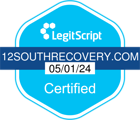According to an article from the Indian Journal of Psychiatry, “[T]he term ‘psychotherapy’ typically includes supportive, re-educative, and psychoanalytic forms of psychotherapy.” The discipline of psychotherapy uses a wide variety of therapeutic interventions to treat mental health disorders. Behavior modification therapy (BMT) is one of the many therapeutic interventions used to support healthier behavioral patterns.
What is BMT, and how can it support mental health recovery?
What Is Behavior Modification Therapy?
According to a 2020 book by Hannah K. Scott and Ankit Jain, behavior modification is a psychotherapeutic intervention that focuses on helping eliminate or reduce maladaptive behaviors in children and adults. Maladaptive behaviors can be defined as behaviors that interfere with an individual’s ability to function in their daily life and activities.
Moreover, maladaptive behaviors make it difficult to participate in different settings like social interactions. For example, someone with an anxiety disorder might engage in avoidance when faced with social interactions or situations. At its core, maladaptive behavior is based on developing unhealthy coping mechanisms to deal with discomfort brought on by mental health disorders.
Many people associate therapeutic interventions with therapies that change thought processes to affect behavior. One example is cognitive-behavioral therapy (CBT). However, BMT does not attempt to dismantle unhealthy thinking patterns. It is more focused on pinpointing specific maladaptive behaviors and working to adjust those behaviors in measurable ways.
Mental Health Disorders and Conditions
As an intervention, BMT is most commonly used to treat children with behavioral disorders and conditions. However, adults can also benefit from BMT. This therapy focuses on changing behaviors that hinder daily functioning, no matter the age of the participant.
Maladaptive behaviors can be observed in adults with disorders like obsessive-compulsive disorder (OCD), anxiety disorders, and autism. According to Scott and Jain, BMT is also commonly used to treat disorders like attention-deficit/ hyperactivity disorder (ADHD), oppositional defiant disorder, conduct disorder, and intermittent explosive disorder.
Behavior Modification Therapy Techniques
Even knowing what behavior modification is and what applications it is useful in, many people still question how BMT works. Within BMT, seven different techniques are used to help target and treat specific behaviors.
An article from the International Journal of Education gives the following list of BMT techniques used to treat externalizing disorders:
- Positive reinforcement pairs a positive stimulus with positive behavior. Participants are rewarded with something for displaying a desired behavior.
- Negative reinforcement pairs positive behavior with the removal of a negative stimulus. When participants display a desired behavior, it results in the removal of something they do not like.
- Punishment weakens maladaptive behaviors by pairing an unpleasant stimulus with the undesired behavior. Participants receive a punishment as a result of poor behavior.
- Flooding is intensely and rapidly exposing participants to objects or situations that invoke fear. For example, if a participant has social anxiety, they may be exposed to making phone calls or starting conversations.
- Systematic desensitization is when participants are taught how to remain calm while focusing on their fear. This technique is often used to treat phobias. For example, someone with social anxiety may start by imagining making a phone call, then writing down what they might say during that call, and eventually participating in an actual call.
- Aversion therapy teaches individuals to engage in nourishing love by building positive thoughts about another person rather than finding flaws in that other person.
- Extinction focuses on removing an unwanted behavior.
Thinning
Scott and Jain note that reinforcement and punishment are major factors in BMT when a behavior plan is established. After that, the therapist uses a process known as thinning to engage in intermittent reinforcement.
Listed below are the four types of intermittent reinforcement:
- Fixed interval: Participants are rewarded at the end of each day.
- Variable interval: The reward time changes.
- At the end of the day
- Sometimes at the end of the week
- Every few days
- Fixed ratio: Participants are rewarded for completing the desired behavior a certain number of times.
- Variable ratio: Participants are rewarded after completing the desired behavior a varied number of times.
BMT, like most therapeutic modalities, will take time and effort. Still, the benefit is well worth the journey.
Benefits of Behavior Modification Therapy
One of the benefits of BMT is the shift from solely punishment-driven modification to also rewarding wanted behavior. If individuals are only punished for their maladaptive behavior, it teaches them to feel bad about themselves. Therefore, also rewarding individuals for avoiding the maladaptive behavior is valuable.
Rewarding positive behavior acknowledges the effort the individual has put into changing those unhealthy patterns. When they know their hard work has been appreciated, it makes it easier to continue to change those behavior patterns.
Appreciation for their hard work makes people feel good about themselves. As the article in the International Journal of Education states, BMT can be a core intervention for recovery. Elements like positive reinforcement provide compliments, approval, encouragement, and affirmation for more behavior modification.
Recovery at 12 South Recovery
At 12 South Recovery, we know that offering a wide range of therapeutic techniques is an important part of the recovery process. Our range of services gives us the flexibility to build a treatment plan that works for your specific needs.
Interventions like BMT focus on supporting the recovery needs of people with a wide variety of disorders and conditions. At 12 South Recovery, we are committed to providing treatment plans that acknowledge how everyone’s needs and experiences are different. Moreover, we know around 9.2 million adults in the United States experience co-occurring disorders. Therefore, considering how different disorders interact with each other is important to help us build a plan of care that truly supports you and the life you want to build in recovery.
Externalizing disorders like ADHD, OCD, and autism can make it difficult to complete tasks and participate in activities at work and school because of maladaptive behaviors. However, with support from therapeutic interventions like behavior modification therapy, you can learn how to stop engaging in maladaptive behaviors. At 12 South Recovery, we believe in providing a variety of therapeutic techniques in our treatment plans to support you on your recovery journey. We know there is not one path to recovery, so we are committed to working with you to build a plan of care in which you feel heard and understood. To learn more about our approach to care, call us at 866-839-6876.


















